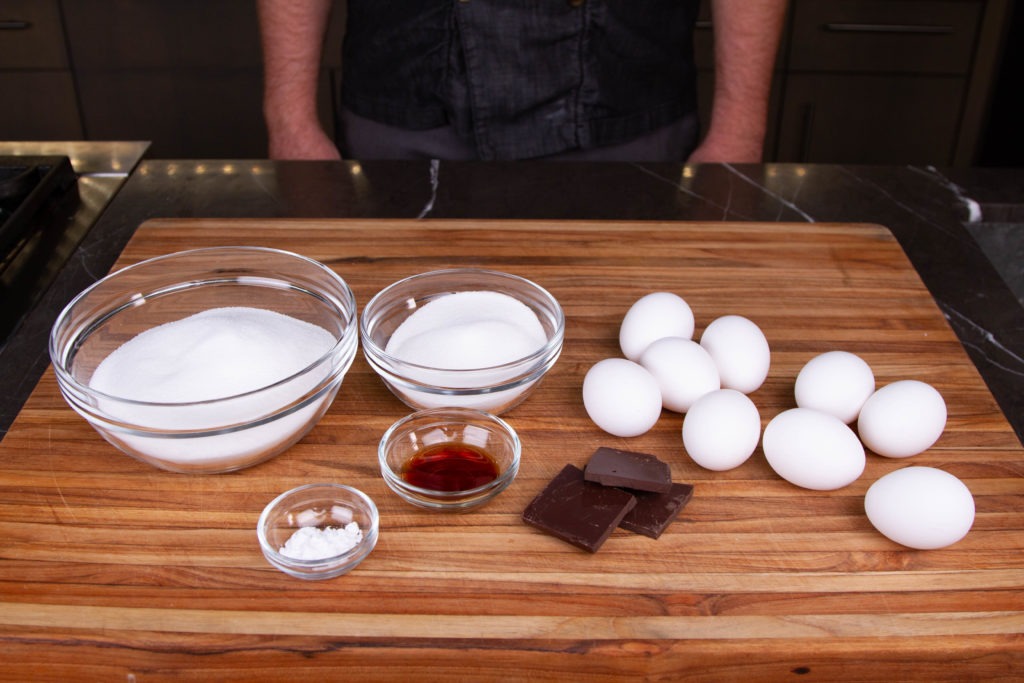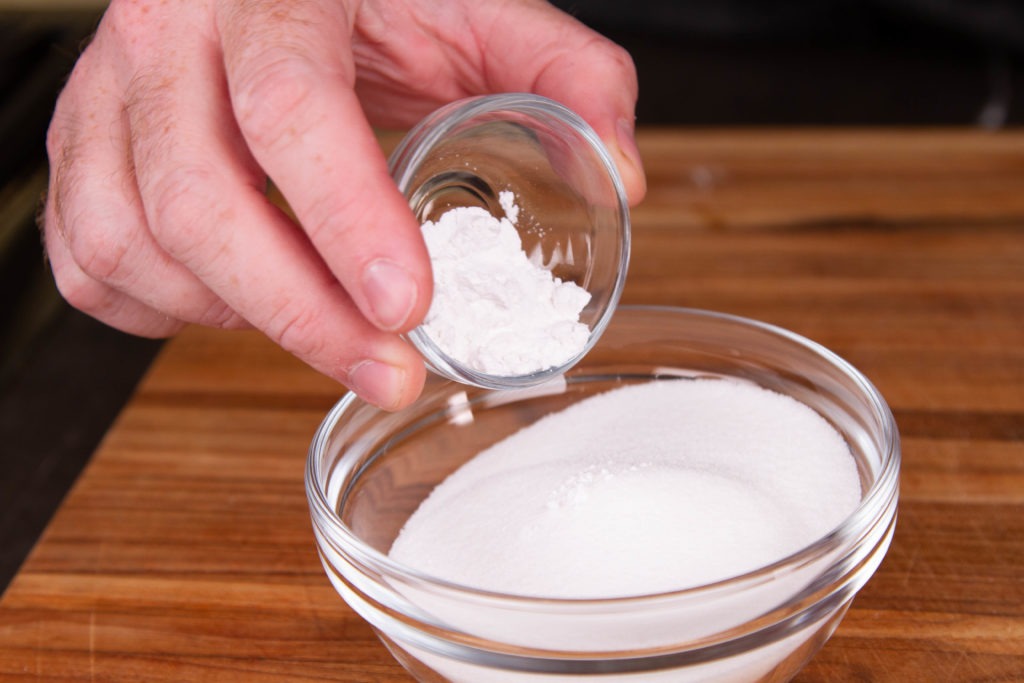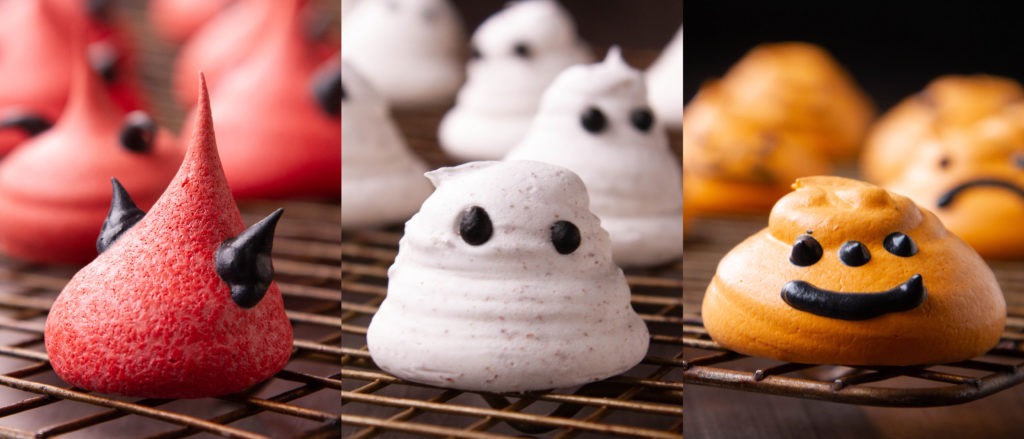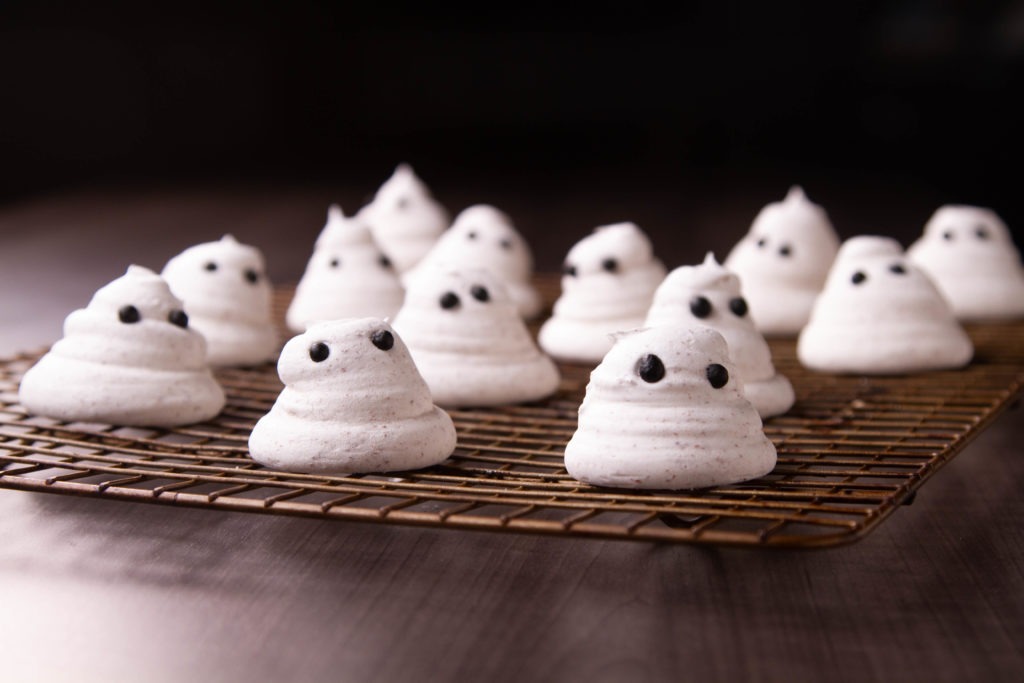As we head towards winter, more people start to think about parties, treats, gifts and, well, candy. Halloween is the season opener for candy, and candy making is something that many people find notoriously difficult. We’d like to help change that.
Candy making is all about seed crystal control and sugar concentration. We’ve covered those two topics in detail in another blog post, but today we’ll go over some of the basics of candy temperatures, which is the way that we measure sugar concentration. As a vehicle for that learning, we’ll be going over Italian meringues, which you can make into crispy-chewy or crunchy-dry cookie candies that are great for Halloween parties, or any time throughout the holidays. So grab your Thermapen® and get ready to get your sugar on!
Contents:
Meringue basics
Meringues are fluffy concoctions made of egg whites and sugar. The type of meringue and its uses are divided by how the egg whites are combined and then further by the proportion of sugar to egg. Classic, basic meringue is the French variety. Egg whites are whipped until frothy, then sugar is added and the whites are further whipped to stiff peaks. The meringue can be used to top pies, etc. It should be cooked before eating, as it is made of raw eggs. This meringue will expand some during cooking as the air bubbles expand from the heat. It is exceptionally light and melts delicately on the tongue.
Swiss meringue is made by beating sugar and egg whites together in a double boiler until the mixture thickens and reaches 100°F (38°C). Then it is taken off of heat and beaten until glossy and stiff. The partial precooking makes this meringue more stable than the French type, and it has a thick, marshmallowy texture. This is often used for icings. It will expand less when cooked because the proteins will already be holding the air more tightly in place.
Italian meringue is the final type and is made by beating the egg whites until stiff and then adding a hot sugar syrup that has been cooked to the soft-ball stage while beating furhter. The hot syrup cooks the egg whites as you beat them together and the result is a very stable, velvety-sticky meringue that can be used for icings or for aerating mousses—or it can be baked on its own for the candy-cookies we’re making here.
Each of these types can be divided into soft and hard meringues. Soft meringues have less sugar than eggs, and hard meringues have more sugar than egg—often as much as twice as much sugar by weight. Soft meringues are less sturdy and more delicate. Hard meringues create much more substantial clouds. These cookies employ a hard meringue.
How to make meringues work
The whipping of eggs is dependent on keeping the whipping bowl free from all oil or grease. It is best to wash your bowl immediately before whipping, to make sure no oil has been smudged on the bowl. Also, it’s best when separating the whites from the yolks to separate them into a small bowl, adding each one to the mixing bowl as you separate them. If any yolk gets in with the whites, your whites will not whip.
Another important tip for whipping egg whites for meringues is to acidulate the egg whites. Adding a little acid to the egg whites start to denature the proteins while the eggs are whipping. Denaturing them chemically in this way makes meringues that are more firm and also less likely to leak out syrup when they are cooking. As a rule of thumb, use cream of tartar in a ratio of 1/16th tsp per egg white.
Candy temperatures and stages
Candy stages are a direct measure of sugar concentration in a syrup. You see, water boils at one elevation-dependent temperature when it’s pure. If you add solutes to it, like sugar, the boiling temperature goes up proportionally to the amount in the solution. By measuring the temperature of the boiling solution we therefore measure the sugar concentration. For this to be a success, an accurate thermometer is needed, and nothing beats the Thermapen for both accuracy and speed! (Read more about why the Thermapen is the best candy thermometer around.)
Softball stage corresponds to a concentration of 85% sugar and boils in the range of 235–240°F (113–116°C). That’s the temperature range we’ll shoot for in the syrup for these candies.
Of course, all that concentration-at-boiling-point-calculation talk is rooted at sea level. Up here where ThermoWorks HQ is located, we boil water about 8°F (4°C) cooler than at sea level. That means that water starts leaving concentration sooner, and that means we get more concentrated syrup at lower temperatures. All candy recipes must make boiling point adjustments for elevation. An elevation adjustment of 2°F (1.1°C) reduction in syrup temperature must be made for each 1,000 ft above sea level you are cooking candy, or you will overcook your sugar. (Or undercook it, in the case of our Death Valley readers.)
Note: since we’re talking about concentrations here, if you overshoot your temperature by a few degrees, you can add a quarter cup of water to your syrup and re-boil it. Just watch the temperature carefully the second time as you’ll probably get to your temp rather quickly.
Italian Meringue Cookie Recipe
Ingredients
- 2 C white sugar (divided)
- 9 egg whites
- 1/2 tsp + a pinch cream of tartar
- 1/3 C water
- 1 tsp vanilla
- 1 square good chocolate (optional)
- Other flavorings (almond extract, coffee extract, lemon zest, etc.) and colorants as desired

Instructions
- In a small bowl, mix 1/3 C of the sugar with the cream of tartar. Set aside.

- In the bowl of an electric mixer that is immaculately clean start whipping the egg whites.
- Once the whites are frothy, sprinkle in the sugar/tartar mix while the mixer is running.

- Whisk on medium-high speed until the whites form stiff but not dry peaks.
- While the whites are beating, combine the remaining sugar with the water in a saucepan and heat over medium-high heat.
- Swirl the pan to help the sugar dissolve and brush down the sides of the pan with a wet pastry brush if any crystals form.
- Once the sugar syrup comes to a boil, start periodically checking it with your Thermapen®. Your target temperature (unadjusted for elevation) is 238°F (114°C).
- The best thing would be to get your sugar to temp and you egg whites ready at the same time, but that’s a bit tricky. If you can’t manage it, aim for the eggs being ready first. You want to move the syrup right from the stove to the eggs.
- Once your egg whites are stiff and your sugar is properly cooked, pour the hot syrup into the mixer—running on medium-low speed to avoid hot-sugar splashes—in a slow, thin stream.
- Increase the speed of the mixer again and let the eggs and sugar whip together until the side of the mixing bowl no longer feels warm to the touch.
- Grate the chocolate, if using.
- Mix the vanilla (or other flavorings) and chocolate into the meringue.
- Preheat your oven to its lowest setting—usually 200°F [93°C], but lower is better. 150–170°F (66–77°C) is best. If your oven only goes down to 200°F [93°C], set it at that temp, but prop the door open slightly with a wooden spoon.
- Scoop the meringue into a piping bag fitted with a piping tip that will make the shape you want. We made ghosts, jack-o-lanterns, and devils, but any shape is fine!
- Pipe the meringue onto cookie pans lined with baking parchment.

- Place the piped meringues in the oven and cook until completely dried out. This may take from 5–12 hours. (You can dry them out less if you want a sticky/chewy center to your meringues.)
- Remove the meringues from the oven and store in an air-tight container or eat them all right now.

Italian meringue drops are a great way to get into candy making. If you can carefully control your sugar temperatures with your Thermapen and you can get your egg whites nice and fluffy, then these feather-light meringues are yours for the taking. And once you bite into one of these, you’ll be glad you tried them!
Shop now for products used in this post:







Leave a Reply